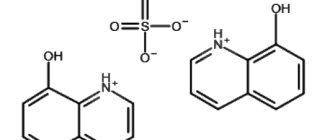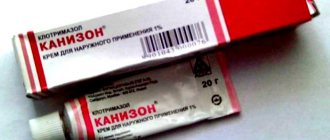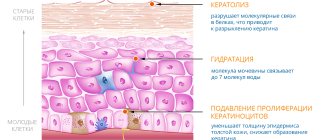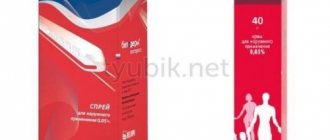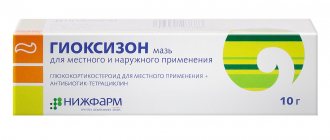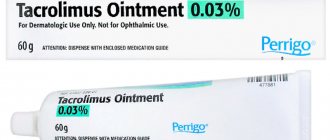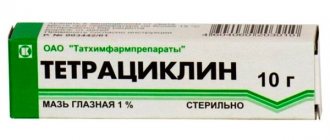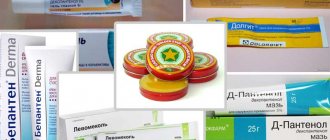- November 21, 2019
- Dermatology
- Elena Kerra
Betamethasone ointment is successfully used in dermatology to treat various skin diseases. It includes a glucocorticosteroid produced by the adrenal cortex. Therefore, before using it, you should definitely consult your doctor.
For what diseases is Betamethasone ointment prescribed? Who should not use it? What side effects may occur? Does this ointment have analogues? The article provides answers to all these questions.
Manufacturers
The substance betamethasone was patented by the American pharmaceutical company Merck in 1987. The patent expired in 2007. This made it possible for many companies to begin producing medications with this substance. One of them is located in Ukraine. It's called "Darnitsa".
The manufacturer exports Betamethasone ointment to many countries of the former CIS, including Russia. Another Ukrainian corporation producing this drug is called Arterium.
Also, Betamethasone ointment is produced by Russian pharmaceutical companies located in Penza and Moscow OJSC Vertex.
Betamethasone ointment - hormonal or not?
This kind of question is addressed by doctors to patients who are encountering a drug for the first time. The instructions included with Betamethasone contain complete information on this matter. The main component in it is betamethasone, which is a synthetic glucocorticosteroid.
This means that in its structure and properties this substance is similar to hormonal compounds synthesized by the human body. Thus, we can say that Betamethasone ointment is hormonal. In this regard, its use should be treated with caution and only after a doctor’s prescription.
Release form
The drug is available in 15 ml aluminum tubes. They are placed in cardboard packages, which must contain instructions for use. The tubes are equipped with a simple screw cap. There is no child resistant system that prevents children from opening the drug. On one side the tube is sealed with a thin aluminum plate. To open it, you need to press on it with the back of the cap, where there is a cone-shaped protrusion.
The medicine, produced in Russia, is available in 30 ml tubes.
Betamethasone ointment - composition
The drug appears in appearance as a white, translucent homogeneous mass. Available in tubes packed in cardboard boxes. The active substance is betamethasone dipropionate. It is directly responsible for providing anti-inflammatory effects. To enhance the therapeutic effect and create a medicine, a number of auxiliary components are used. The composition of Betamethasone ointment includes:
- liquid paraffin;
- white soft paraffin.
Compound
In the drug in question, the main active ingredient is betamethasone dipropionate. It is a glucocorticoid (steroid hormone) produced by the adrenal cortex. It does not have androgenic, progestogenic and estrogenic activity. The concentration of the active substance in the ointment is 0.05%.
The product also contains additional components that ensure the desired consistency of the product and its absorption into the skin. This:
- mineral oil;
- disodium edetate;
- propylene glycol;
- cetostearyl alcohol;
- purified water.
This composition is indicated in the instructions. The ointment produced by the Arterium Corporation contains other excipients. This:
- methylparaben (E218);
- mineral oil;
- cetostearyl ether;
- propylene glycol;
- polyethylene glycol (macrogol);
- cetostearyl alcohol;
- imidomerea;
- glycerol;
- dimethicone;
- monohydrate;
- white paraffin;
- purified water;
- sodium dihydrogen phosphate;
- dilute phosphoric acid.
In Russian drugs, the additional components are:
- petrolatum;
- liquid paraffin.
All betamethasone-based ointments have the same therapeutic effect. Those people who are prone to allergic reactions need to know the detailed composition. They can be caused by any substance included in the drug. As you can see, the drug Betamethasone, produced by Russian pharmacists, contains only two additional components. They have virtually no negative effects on the body.
Betamethasone ointment or cream – which is better?
The drug for topical use is available in two forms: cream and ointment. Because of this, patients often have questions about whether Betamethasone ointment or cream is better and what the difference is. If you look at the composition of the medicines, it is the same in terms of the active ingredient and its concentration. The differences lie only in the additional components, which determine the consistency of the drug:
- Ointment is a thicker form, made using fats and paraffins. This helps the active ingredients penetrate deep into the tissue.
- Cream – made on the basis of oils and water. Easier to apply, quickly absorbed. Can be used for superficial skin lesions, which are accompanied by the release of exudate and serous fluid.
Description of the drug
The ointment is easily squeezed out of the tube and has a delicate creamy consistency. Patients report that the product is easy to apply to the skin, is quickly absorbed, and does not cause a burning sensation. The ointment is practically odorless. Its color varies from yellowish to white, which depends on the additional components included in the composition.
The shelf life of the drug is 36 months. It can be stored indoors where the air temperature is maintained within +25 °C. Do not expose the drug to direct sunlight.
Preparations containing the hormone betamethasone
Daivobet ointment
Belogent ointment
Celestoderm-v
Rederm ointment
Triderm ointment Eubetal ointment
Akriderm cream
Diprosalik ointment
Therapeutic properties
Betamethasone ointment has pronounced anti-inflammatory, antipruritic and antiallergic effects.
Glucocorticoid hormone is able to block the migration of leukocytes and prevent the release of lysosomal enzymes, as well as anti-inflammatory mediators, into the intercellular space at the site of inflammation. Betamethasone dipropionate reduces vascular permeability. In addition, it suppresses phagocytosis, slows down, and then completely stops the development of swelling.
Properties
Betamethasone ointment is a synthetic product of the glucocorticoid group. Betamethasone is used in dermatology for the treatment of skin diseases that are characterized by damage to the integrity of the epithelial surface and the appearance of foci of inflammation in different parts of the body.
Important! The ointment contains adrenal hormone, so before use you should consult a specialist and carefully study the instructions about contraindications for use and side effects.
The ointment has strong anti-inflammatory properties. In addition, the medication is able to relieve the sensation of itching and slow down the progression of allergic reactions. In addition, Betamethasone ointment helps release anti-inflammatory mediators, stop the influx of leukocytes, reduce the permeability of vascular walls, have an inhibitory effect on the process of phagocytosis and stop the process of swelling from inflammation.
In case of external use, the product has a systemic effect, since about 12-15% of the active substance enters the blood supply, where it subsequently combines with plasma proteins. Metabolic processes of the components of the ointment occur in the liver and are then excreted by the kidneys (only a small amount penetrates into the bile). It should be noted that the presence of damage or excessive inflammation at the sites of application increases the penetration of betamethasone into the muscle tissue layers. Occlusive dressings have a similar effect.
Pharmacokinetics
According to the instructions for use, Betamethasone ointment, when used externally, penetrates well into the skin, but is only slightly absorbed into the bloodstream (only 12-14%). In the blood it binds to proteins. Transformed in the liver. It is excreted mainly by the kidneys. A small amount of the drug is removed from the body with bile.
When the medication is applied to the skin in places where its integrity is damaged, the hormone is absorbed into the blood in a larger volume. The same is observed when using the drug for occlusive dressings.
Betamethasone
GCS inhibits the release of interleukin1, interleukin2, interferon gamma from lymphocytes and macrophages. It has anti-inflammatory, antiallergic, desensitizing, antishock, antitoxic and immunosuppressive effects.
Suppresses the release of ACTH and beta-lipotropin by the pituitary gland, but does not reduce the content of circulating beta-endorphin. Inhibits the secretion of TSH and FSH.
Increases the excitability of the central nervous system, reduces the number of lymphocytes and eosinophils, increases the number of red blood cells (stimulates the production of erythropoietin).
Interacts with specific cytoplasmic receptors and forms a complex that penetrates the cell nucleus and stimulates the synthesis of mRNA; the latter induces the formation of proteins, incl. lipocortin, mediating cellular effects. Lipocortin inhibits phospholipase A2, suppresses the release of arachidonic acid and suppresses the synthesis of endoperoxides, Pg, leukotrienes, which contribute to inflammation, allergies, etc.
Protein metabolism: reduces the amount of protein in plasma (due to globulins) with an increase in the albumin/globulin ratio, increases the synthesis of albumins in the liver and kidneys; enhances protein catabolism in muscle tissue.
Lipid metabolism: increases the synthesis of higher fatty acids and TG, redistributes fat (fat accumulation mainly in the shoulder girdle, face, abdomen), leads to the development of hypercholesterolemia.
Carbohydrate metabolism: increases the absorption of carbohydrates from the gastrointestinal tract; increases the activity of glucose-6-phosphatase, leading to an increase in the flow of glucose from the liver into the blood; increases the activity of phosphoenolpyruvate carboxylase and the synthesis of aminotransferases, leading to the activation of gluconeogenesis.
Water-electrolyte metabolism: retains Na+ and water in the body, stimulates the excretion of K+ (MCS activity), reduces the absorption of Ca2+ from the gastrointestinal tract, “washes out” Ca2+ from the bones, increases the excretion of Ca2+ by the kidneys.
The anti-inflammatory effect is associated with inhibition of the release of inflammatory mediators by eosinophils; inducing the formation of lipocortin and reducing the number of mast cells that produce hyaluronic acid; with a decrease in capillary permeability; stabilization of cell membranes and organelle membranes (especially lysosomal ones).
The antiallergic effect develops as a result of suppression of the synthesis and secretion of allergy mediators, inhibition of the release of histamine and other biologically active substances from sensitized mast cells and basophils, T- and B-lymphocytes, mast cells, decreased sensitivity of effector cells to allergy mediators, inhibition of antibody formation, changes the body's immune response.
In COPD, the action is based mainly on inhibition of inflammatory processes, inhibition of development or prevention of swelling of the mucous membranes, inhibition of eosinophilic infiltration of the submucosal layer of the bronchial epithelium, deposition of circulating immune complexes in the bronchial mucosa, as well as inhibition of erosion and desquamation of the mucous membrane. Increases the sensitivity of beta-adrenergic receptors of small and medium-caliber bronchi to endogenous catecholamines and exogenous sympathomimetics, reduces the viscosity of mucus by inhibiting or reducing its production.
Antishock and antitoxic effects are associated with an increase in blood pressure (due to an increase in the concentration of circulating catecholamines and restoration of the sensitivity of adrenergic receptors to them, as well as vasoconstriction), a decrease in the permeability of the vascular wall, membrane protective properties, and activation of liver enzymes involved in the metabolism of endo- and xenobiotics.
The immunosuppressive effect is due to inhibition of the release of cytokines (interleukin1, interleukin2; interferon gamma) from lymphocytes and macrophages.
Suppresses the synthesis and secretion of ACTH and, secondarily, the synthesis of endogenous corticosteroids. Inhibits connective tissue reactions during the inflammatory process and reduces the possibility of scar tissue formation.
The drug is an easily soluble compound that is well absorbed after parenteral administration into tissues and provides a rapid effect. The drug has slower absorption. By combining these salts it is possible to create drugs with both short-term (but rapid) and long-term effects. Depending on the method of application (IV, IM, intra-articular, periarticular, IV), a general or local effect is achieved.
Indications
According to the instructions for use, Betamethasone ointment is used in the treatment of diseases such as:
- eczema;
- neurodermatitis;
- photodermatitis;
- dermatitis;
- nodular prurigo (prurigo);
- necrobiosis lipoidica;
- lichen planus;
- lupus erythematosus;
- pretibial myxedema;
- psoriasis (except for lesions on large areas of skin with the formation of plaques);
- diaper rash;
- erythroderma.
In reviews, patients write that the ointment helped them get rid of phimosis and seborrhea on the scalp without surgery.
The mechanism of action of Betamethasone has not been fully studied. However, it is known that the drug works in two directions:
- Locally it has an anti-inflammatory and immunosuppressive effect.
- Stimulates the production of antioxidants, activating protective forces not only in the affected area of the skin, but throughout the body.
Use of the substance Betamethasone
- Fungal skin infections;
- skin itching;
- chronic skin diseases (psoriasis, eczema);
- erythroderma;
- urticaria (precisely allergic);
- myxedema;
- lichen planus;
- neurodermatitis;
- various types of dermatitis: solar, seborrheic, herpetic, contact.
Childhood
Ointments containing betamethasone are not recommended for children, since studies on the effect of this hormone on the functions of the HPA axis (hypothalamic-pituitary-adrenal system) and on the entire body have not been conducted. In addition, patients in this category have significantly less body surface area than adults, and its ratio to weight is greater. This also needs to be taken into account when determining the effect of the absorbed hormone on the body.
However, in reviews, patients indicate that doctors quite often prescribe Betamethasone to children for the treatment of dermatitis and other skin diseases.
Which is better, betamethasone® or dexamethasone®?
Betamethasone® is a synthetic analogue of dexamethasone®.
The most important parameters for assessing the effect of corticosteroids on the body are steroid binding, inhibition of protein transcription, reduction in the synthesis of various cytotoxins, suppression of the functioning of eosinophils and the production of leukotrienes. When applied topically, dectamethasone® acts slightly worse than betamethasone®, although in general they belong to the same group in terms of the strength of their effect on inflammatory processes occurring in the skin.
Pregnancy and lactation
Betamethasone ointment is prohibited for use by women breastfeeding, since it has not yet been determined whether the substances included in its composition are capable of penetrating into breast milk. Doctors must consider the importance of treatment to the mother when prescribing this drug. If it is impossible to do without the use of Betamethasone, stop breastfeeding.
During pregnancy, therapy with this ointment is allowed only in the later stages. It cannot be used in the first trimester. Also, women carrying a child are prohibited from applying the drug to large areas of skin and under occlusive dressings.
Method of use
The ointment should be applied to the problem area of the skin in a thin layer. The frequency of the procedure depends on the severity of the disease. If it manifests itself in a mild form, it is enough to use the medication once a day. In other cases, you need to apply the ointment 2-3 times a day. The duration of treatment with Betamethasone should not exceed 4 weeks. If during this time there is no improvement in the patient’s condition, the drug is discontinued. The doctor must prescribe another remedy.
If after applying the ointment for 1-2 weeks the patient’s condition worsens, you should also stop using the drug. The doctor must re-examine the patient and prescribe other medications.
ATTENTION!
The information on the page you are viewing is created for informational purposes only and does not in any way promote self-medication. The resource is intended to provide healthcare workers with additional information about certain medications, thereby increasing their level of professionalism. The use of the drug " Betamethasone " requires consultation with a specialist, as well as his recommendations on the method of use and dosage of the medicine you have chosen.
Source: allmed.pro
Contraindications
The drug cannot be used to treat the following diseases:
- skin lesions by pathogenic bacteria, fungi, viruses, including herpes zoster, chickenpox;
- acne;
- rosacea;
- plaque psoriasis;
- genital or perianal itching;
- lupus;
- syphilis, manifested on the skin.
Betamethasone ointment should not be used by people who have the following diseases and conditions:
- individual intolerance to any component included in the product;
- varicose veins;
- diabetes mellitus (consultation with a doctor is required before treatment).
Side effects
The instructions for the drug indicate that Betamethasone can cause the following negative reactions:
1. For the skin:
- redness;
- itching;
- peeling;
- burning;
- folliculitis;
- hypertrichosis;
- hyperpigmentation;
- contact dermatitis (allergic);
- erythema;
- telangiectasia (dilation of capillaries, arterioles, venules);
- rosacea-like dermatitis;
- maceration and skin atrophy;
- striae;
- secondary infection.
2. From the endocrine system:
- suppression of the HPA axis with the development of secondary adrenal insufficiency;
- Itsenko-Cushing syndrome.
In children who were treated with Betamethasone for a long time, the following adverse reactions were observed:
- suppression of adrenal function;
- hypercortisolism syndrome;
- growth retardation;
- insufficient weight gain;
- intracranial hypertension, accompanied by headaches, swelling of the optic nerve.
Instructions for the use of Betamethasone injections
According to the instructions, the drug is started at a high dose. For acute inflammatory conditions - 1 injection of 1.5-2 mg. Then, from the 2nd day of treatment, the dose is gradually reduced to the minimum effective dose. The dosage of the drug depends on the type and degree of the patient’s disease. For an adult, the amount of the substance should not exceed the daily norm - 0.25-8 mg.
Side effects and overdose
In patients with diabetes mellitus, the drug can lead to a diabetic crisis. Headaches, sleep problems and mental instability may occur, especially in people with a mobile and weak psyche.
It is not recommended to give injections if you have previously been vaccinated. This applies primarily to smallpox vaccination. It must be remembered that betamethasone is a drug that suppresses the immune response, and during the treatment period it is easy to become infected with viral infections. And chicken pox can be extremely dangerous for adults who do not have immunity to it.
In addition, for diverticulitis, gastritis and pustular infections, such as an abscess, the drug should be used with caution.
If you take an anti-inflammatory drug for more than the prescribed period, hyperglycemia, disruption of the adrenal glands, and some manifestations of Cushing's syndrome may occur. However, these phenomena are reversible.
This anti-inflammatory drug should not be injected into an unstable joint or infected soft tissue. Treatment of joints is carried out only under the supervision of a doctor.
Overdose
This condition can occur if Betamethasone ointment is used more than 3 times a day, applied to too large areas of the skin or under occlusive dressings, and the course of treatment is carried out for longer than 4 weeks.
An overdose can cause depression of the pituitary-adrenal system. This is manifested by the following symptoms:
- weakness;
- dyspnea;
- hypotension;
- dizziness;
- nausea;
- joint pain.
Treatment is symptomatic. In some cases, it may be necessary to correct the electrolyte balance.
Special conditions
According to the instructions for use, Betamethasone ointment should not be applied to the skin around the eyes and used for the treatment of ophthalmological diseases. This can trigger the development of cataracts or glaucoma. You can apply the drug to your face, but not for long.
If you need to treat diseases with Betamethasone that have caused damage to large areas of the skin, this medication can only be used after consulting a doctor. During the course of therapy, it is necessary to periodically monitor the patient's condition in order to promptly detect inhibition of the HPA axis (if it occurs) and discontinue the drug.
If during the treatment a fungal or bacterial skin infection additionally appears, you need to additionally use antibacterial or antifungal drugs.
Do not apply the cream to the armpits and groin area, as stretch marks may form.
Side effects
In case of prolonged therapy with the drug, there is a possibility of:
- temporary decrease in immunity;
- local reactions on the skin (acne, rash, age spots, etc.);
- increased sweating.
Some patients experience slow healing of wounds and injuries.
Important! Using the drug in quantities greater than recommended by the instructions can cause severe burning and itching, and dry skin.
In addition, other side effects are possible:
- weight gain;
- swelling;
- exacerbation of hypertension;
- increased blood sugar;
- disruptions of the menstrual cycle in women;
- nervous conditions;
- sleep disorders;
- disorders of the adrenal glands.
When treating a child with Betamethasone ointment for more than 5 days, there is a risk of the following disorders:
- weight loss;
- increased intracranial pressure;
- headache;
- edematous processes in the area of the optic nerve;
- lowering cortisol levels in the blood;
- enlargement and swelling of the fontanel.
Important! The occurrence of side effects requires specialist supervision. Certain situations may require discontinuation of the drug or dose reduction.
The use of Betamethasone ointment is contraindicated, therefore women who are expecting a baby should refrain from using the drug. This is due to the fact that the medicine can have a negative effect on the development of the fetus. Among the exceptions are situations in which there are no alternative therapies, then strict supervision of a medical specialist is required.
In case of regular use, Betamethasone ointment is found in breast milk, growth inhibition and other negative consequences appear, therefore, breastfeeding will need to be discontinued during drug therapy.
Analogs
Many patients cannot use Betamethasone ointment for one reason or another. In this case, doctors prescribe drugs that give the same therapeutic effect. For ease of perception of information, we have put them in a table.
| No. | Name | Main active ingredient | Indications |
| 1 | "Dermadrin" | Diphenhydramine hydrochloride | Dermatitis of various etiologies, eczema, urticaria, dermatoses, insect bites, sunburn |
| 2 | "Gistan-N" | Mometasone | Dermatoses with severe itching, dermatitis, (atopic, seborrheic) psoriasis |
| 3 | "Sinalar" | Fluocinolone acetonide | Eczema, pruritic dermatosis, psoriasis, diaper rash, ringworm, dermatitis, lupus erythematosus |
| 4 | "Mometasone" | Mometasone furoate | Eczema, dermatitis, hyperkeratosis, dermatoses |
| 5 | "Avecort" | Mometasone | Itching and inflammation of the skin with dermatoses of various etiologies |
Nowadays, various pharmaceutical companies produce many ointments with betamethasone. The names of these drugs:
- "Celestoderm-B";
- "Roderm";
- "Akriderm";
- "Diprosalik";
- "Beloderm";
- "Beloderm Express";
- "Candiderm";
- "Diprospan" (suspension);
- "Betaspan Depot" (suspension);
- "Betliben";
- "Anekzem";
- "Mesoderm".
Some drugs (for example, Candiderma, Diprosalik, Roderma) have several main active ingredients. These are betamethasone, clotrimazole, gentamicin, salicylic acid. This composition expands the range of diseases for which these medications can be used.
pharmachologic effect
The medicine belongs to the group of simple anti-inflammatory drugs. This is a non-glucocorticoid drug that helps relieve pain, reduce swelling during inflammation, and can even help with shock conditions. The drug acts on the development of inflammation in many ways, having an active effect on all stages of the biological process:
- the product reduces the synthesis of mediators responsible for inflammation;
- reduces the susceptibility of receptors that perceive signals from these mediators;
- inhibits the transport of immune cells (basophils, neutrophils) to the site of inflammation;
- changes metabolic processes in the body, retains water;
- changes the very nature of the course of inflammation.
Another important effect of the substance is that the drug increases blood pressure in order to stop the shock reaction.
Indications and contraindications for use
The drug Betamethasone is used in cases where the inflammation process is acute or chronic and causes the body to work for wear and tear. Prescribed for a wide range of diseases and abnormal allergic reactions.
The list of disorders for which the drug is indicated is as follows:
- Allergic reactions: lupus erythematosus, allergic rhinitis and skin rashes.
- Acute respiratory diseases: tuberculosis, sarcoidosis, status asthmaticus.
- Skin pathologies of various origins: psoriasis, neurodermatitis, severe cases of eczema.
- For problems with joints - polyarthritis, arthrosis, and is also used for complex fractures and lesions of periarticular soft tissues, inflammation due to osteochondrosis or spondyloarthrosis.
- Lesions of the intervertebral discs in the spinal trunk.
- Acute inflammation of the heart muscle - endocarditis.
- Intestinal inflammation - enterocolitis, Crohn's disease.
- Systemic scleroderma.
- Congenital and acquired blood diseases (mainly anemia associated with autoimmune complex disorders).
Contraindications to the administration of Betaspan include the following:
- high blood pressure;
- diabetes;
- hypersensitivity to the active ingredient;
- renal failure;
- stomach and duodenal ulcers;
- viral diseases of the epidermis;
- severe mental illness (neurosis, psychosis, schizophrenia);
- convulsive conditions.
Before prescribing injections, the doctor must refer the patient for examination to make a diagnosis. It is especially dangerous to take the drug if you have kidney problems.
Patient opinions
Both in Ukraine and in Russia there are good reviews about Betamethasone ointment. This remedy quickly relieves itching, redness and flaking of the skin. Many people write that the drug helped them get rid of phimosis without surgical treatment. There are reviews in which it was used for seborrheic dermatitis of the head. The effect of this treatment was good, but a 15 mg tube lasted only 3-4 days.
Many reviews report that doctors prescribed Betamethasone cream to children, despite the fact that the instructions prohibit it. Treatment with the hormonal drug did not cause any adverse reactions in the young patients, but the course lasted only 2 weeks.
In negative reviews about Betamethasone, users indicate that treatment with this drug causes a good, but short-lived effect.

